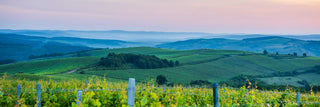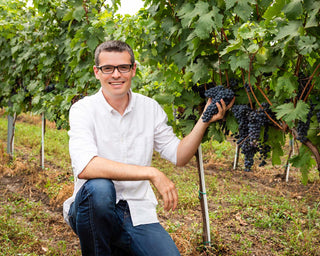Everything you need to know about Feteasca Regala
Fetească Regală is Romania’s most widely planted grape variety, thriving in both cool and warm climates, which makes it incredibly versatile.
As the most consumed grape within the country, it holds immense popularity and is a key part of Romanian wine culture. To truly understand Romanian wine, you must experience Fetească Regală.

Origin
Fetească Regală originates from Transylvania, Romania.
Over time, there have been several theories about the parentage of this variety. Viticulturist Hening (Jidvei) believed it to be a cross between Fetească Albă and Dünnschälige (Frâncușă Albă), found in the old Transylvanian vineyards. Müller (Aiud) claimed that the Dănășană variety was a cross between Fetească Albă and Honigler (Dulce Mieros). Gh. Constantinescu, I. Höfner, and his successor, Friedrich Caspari, considered the variety to be a cross between Fetească Albă and Grasă de Cotnari.
Recent molecular analyses have revealed that the true parents of the variety are Fetească Albă and Frâncușa.
History
There are some speculations that this variety has been cultivated in Transylvania for thousands of years, though there is no solid evidence. Its first mentions in various local publications date back to the 1880s.
Initially, the variety was established in cultivation by A. Ligner, a preacher at the Lutheran church in Daneș. Later, he worked with A. Krafft, from Mălâncrav, who had a vine nursery.
In 1903, A. Krafft planted approximately 1,000 Fetească Regală vines on the banks of the Boartăș River in the same village. Since this was the first recorded vineyard with Fetească Regală in Daneș, the variety is also known by the synonym "Dănășană."
The variety attracted the attention of Transylvanian grape growers in the early 1900s, due to its promotion at an agricultural exhibition in Mediaș.
In 1912, it appeared for the first time in specialized literature under the names Galbenă de Ardeal and Dănășană.
German viticulturist Friedrich Caspari recognized the potential of this variety and helped spread it across Transylvania, initially under the name Dünnesdörfer Königsast and later as Königsast weiss, as it appeared in his 1917 catalog.

In 1925, Friedrich Caspari presented the variety for the first time at the Bucharest Wine Fair under the name Dünnesdörfer Königsast. The wine produced from this variety was labeled as "Fetească Regală."
That same year, I.C. Teodorescu established Romania’s first ampelographic collection at the Nicolae Bălcescu Agricultural Research Institute in Bucharest, including the variety in his works under the name "Galbenă de Ardeal."
The variety was also featured in the Ampelography of Romania from 1957, where Galbenă de Ardeal appeared with the synonyms "Fetească Regală" and "Fetească de Daneș."
Etymology
Fetească Regală is often translated in English as "Royal Maiden".
The Fetească Regală variety borrowed the name "Fetească" from one of its parent varieties, Fetească Albă.
Linguistic analysis suggests that the name Fetească comes from the village of Fetești, in the commune of Scobinți, Iași County, with extensive vineyards mentioned as far back as the 12th century. On July 9, 1631, Voivode Moise Movilă sold and confirmed the ownership of Eustație the 3rd, over the village of Fetești, located in the Hîrlău region, under Dealul lui Vodă, between Cotnari and Hîrlău. In addition to the village, he also sold him seven vineyards in Dealul lui Vodă.
According to linguist Ion Nuță, the name of the village Fetești comes from Fătu or Fetea, rather than from fată (girl) plus the suffix -esc.
Synonyms
According to the VIVC (Vitis International Variety Catalogue), there are 35 known synonyms for this grape.
The most common synonyms in Romania are: Dănășană and Galbenă de Ardeal.
Hungarian synonyms include: Danosi, Danosi Leanyka, and Kiraly Leanyka.
German synonyms: Danesdoerfer Königsast and Königliche Maedchentraube.
Ukrainian synonym: Fetyasca korolevskaia.
Cultivation Area
As of March 2023, Feteasca Regala covers a total of 12,088.14 hectares in Romania, accounting for 6.78% of the country’s total vineyard area, making it the most widely planted grape in the country (source: ONVPV).
Its versatility allows it to thrive across diverse climates, from cooler to warmer regions, solidifying its position as a cornerstone of Romanian viticulture.
Outside of Romania, it is cultivated in Moldova (270 hectares, as of 2019), Ukraine, Hungary, the Czech Republic, Slovakia, Austria, and Germany.
Wine Characteristics
Compared to other white varieties, Feteasca Regală has a relatively high tannin content, giving it the potential to produce wines suitable for aging.
Wines made from Feteasca Regală are typically dry or semi-dry, with a robust structure and a good balance between alcohol and acidity. They can be highly floral (acacia, elderflower, linden) and fruity (summer apples, pears, peaches, grapefruit).
If you want to try a representative style for this grape variety, I recommend the Grigorescu Fetească Regală from Jidvei Winery. If you want to try a sophisticated, wild yeast-fermented exceptional example, then Fleur Royale from Histria Winery is the way to go.
The variety tends to have high acidity, making it ideal for sparkling wine production. An exceptional example is Scintti Brut White Feteasca Regala.
When it comes to food pairings, Feteasca Regală is one of the most versatile varieties, pairing effortlessly with a wide range of dishes. For specific pairing examples, refer to the detailed pages of the wines listed here.
Not a Moldovan grape!
Feteasca Regala is sometimes mistakenly described as a native variety of Moldova. However, its origin is Romania, specifically the Transylvanian region. It is officially registered as a Romanian grape variety in the VIVC (Vitis International Variety Catalogue) (registration number 4121).
Sources
- Tiberiu Onuțu
- ONVPV
- Julius Kühn-Institut
- Caspari Mediaș
I could not have written this article without the information provided by Mr. Tiberiu Onuțu, who has dedicated a significant part of his professional career to promoting Romanian grape varieties. Through this article, I aim to contribute to promoting Romanian viticulture worldwide, especially in Japan, which is why I have translated it into Japanese.
I sincerely appreciate any feedback, suggestions, or critiques regarding this article. Anyone who wishes to contribute with new information about the Fetească Regală grape variety can do so through the general contact form, the comments section below, via our Instagram account, or on our Facebook page.
Fetească regală wines
All of our Fetească Regală wines are displayed here. Daniel's Wine Club members enjoy additional exclusive discounts. If you haven't joined yet, we invite you to do so here.
2024.10.17
Daniel BERES





